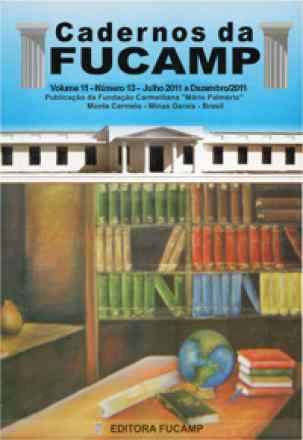AVALIAÇÕES EM LARGA ESCALA: UMA TENTATIVA DE CONTROLE, REGULAÇÃO, CAPTURA E PADRONIZAÇÃO DO COTIDIANO ESCOLAR
CADERNOS DA FUCAMP
AVALIAÇÕES EM LARGA ESCALA: UMA TENTATIVA DE CONTROLE, REGULAÇÃO, CAPTURA E PADRONIZAÇÃO DO COTIDIANO ESCOLAR
Autor Correspondente: Eduardo Carlos Souza Cunha | [email protected]
Palavras-chave: Avaliações em larga escala; Base Nacional Comum Curricular; Padronização; Cotidiano escolar.
Resumos Cadastrados
Resumo Português:
O presente artigo tem por objetivo problematizar acerca das avaliações em larga escala e como estas avaliações tem se configurado no cotidiano escolar face à emergência e imposição de uma Base Nacional Comum Curricular (BNCC) que se constitui em um instrumento para padronização dos sistemas de ensino de todo país, incluindo neste contexto as redes públicas e particulares de ensino. Entre essas e outras problemáticas buscaremos também discorrer acerca dos aspectos históricos e temporais das avaliações externas no Brasil, bem como apresentar um panorama das características de cada uma dessas avaliações que formam o leque avaliativo do ensino e da aprendizagem nas escolas brasileiras em seus mais diversos níveis e contextos da educação básica. Procuraremos também explicitar e refletir a evolução e a configuração do pensamento de uma Base Nacional Comum Curricular a partir de um olhar enviesado sob a ótica da legislação, da temporalidade, da espacialidade e dos interesses em disputa, analisando assim, os sujeitos e os atores envolvidos na criação da BNCC e suas imbricações no estabelecimento de avaliações em larga escala como método avaliativo e quantitativo, bem como das suas possibilidades e implicações no cotidiano das escolas de todo país. E por fim, teceremos as relações da BNCC com as avaliações externas como forma de padronização educacional e obediência a padrões e expectativas do neoliberalismo e de suas mais diversas instituições cuja estrutura e objetivação sobre a qualidade e eficiência do ensino está baseada e fundamentada em pressupostos racionalistas, positivistas e empiristas.
Resumo Inglês:
The present article aims to problematize about the large - scale evaluations and how these evaluations have been configured in the daily school life in the face of the emergence and imposition of a National Curricular Common Base (BNCC) that constitutes an instrument for standardization of Education, including in this context public and private education networks. Among these and other problems we will also seek to discuss the historical and temporal aspects of the external evaluations in Brazil, as well as to present an overview of the characteristics of each one of these evaluations that form the evaluative range of teaching and learning in Brazilian schools in its most diverse levels And contexts of basic education. We will also try to explain and reflect the evolution and the configuration of the thought of a National Curricular Common Base from a skewed view from the perspective of legislation, temporality, spatiality and conflicting interests, thus analyzing subjects and Actors involved in the creation of BNCC and its imbrications in the establishment of largescale evaluations as an evaluation and quantitative method, as well as its possibilities and implications in the daily life of schools throughout the country. And finally, we will establish the relations of the BNCC with the external evaluations as a f orm of educational standardization and obedience to the standards and expectations of neoliberalism and its most diverse institutions whose structure and objectivation on the quality and efficiency of education is based and grounded In rationalist, positivist, and empiricist assumptions.

